Turkey: June 6, Istanbul, Bosphorus Cruise
Our cruise will take us northeast up the European side of the Bosphorus, then come back down the Asian side. The Bosphorus is a narrow channel of water that splits Istanbul in two and separates Europe from Asia. (See my second Turkey blog post for maps of the strategic waterways.)
The cruise starts at 2 pm and lasts about an hour and a half. I shot about 100 photos. I won't show you that many, don't worry! I find the GPS tags on the photos fun - I can pull up our exact location for each shot, thus mapping our journey.
We start right between the Galata and Ataturk bridges, on the Old Istanbul side of the Golden Horn. This photo is of part of the Ahi Ahmet Celebi Cami. I like the crumbling structure you see in front.
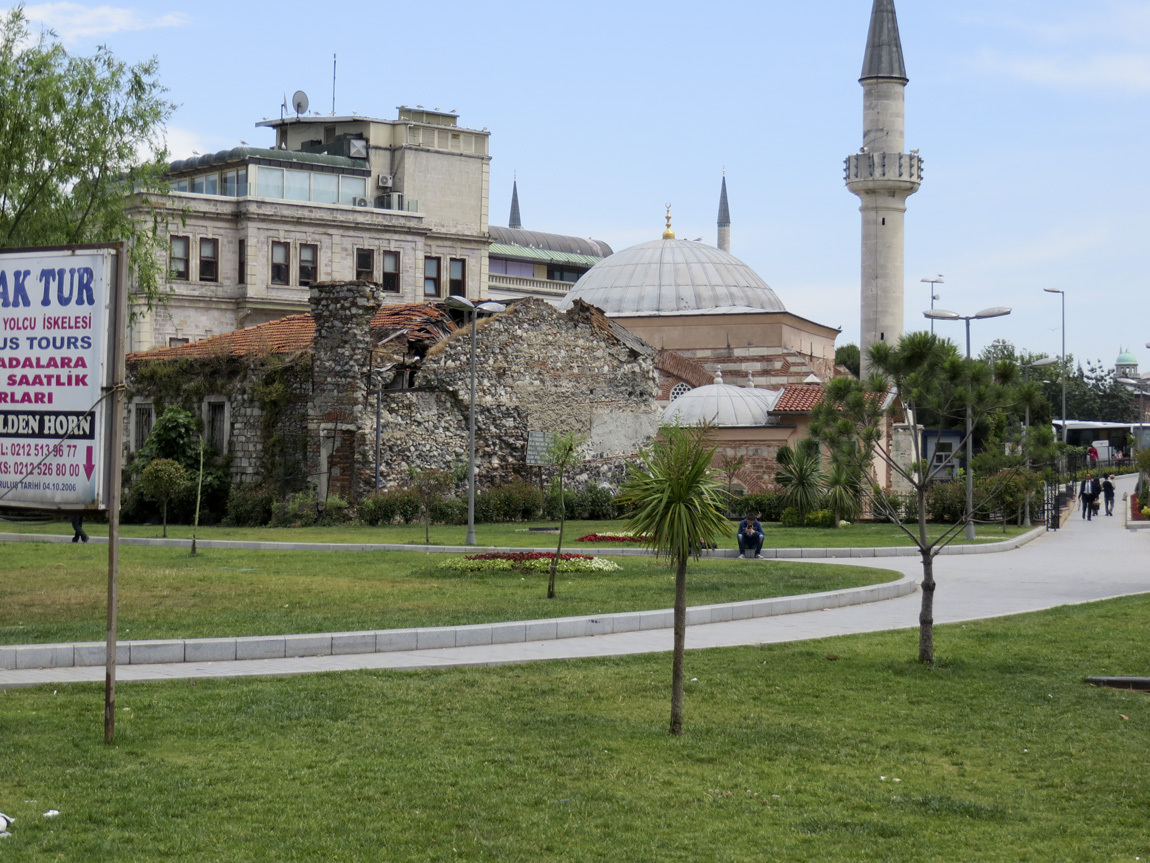
We follow Ali, wondering which boat is ours. This one looks about the right size for 22 people:
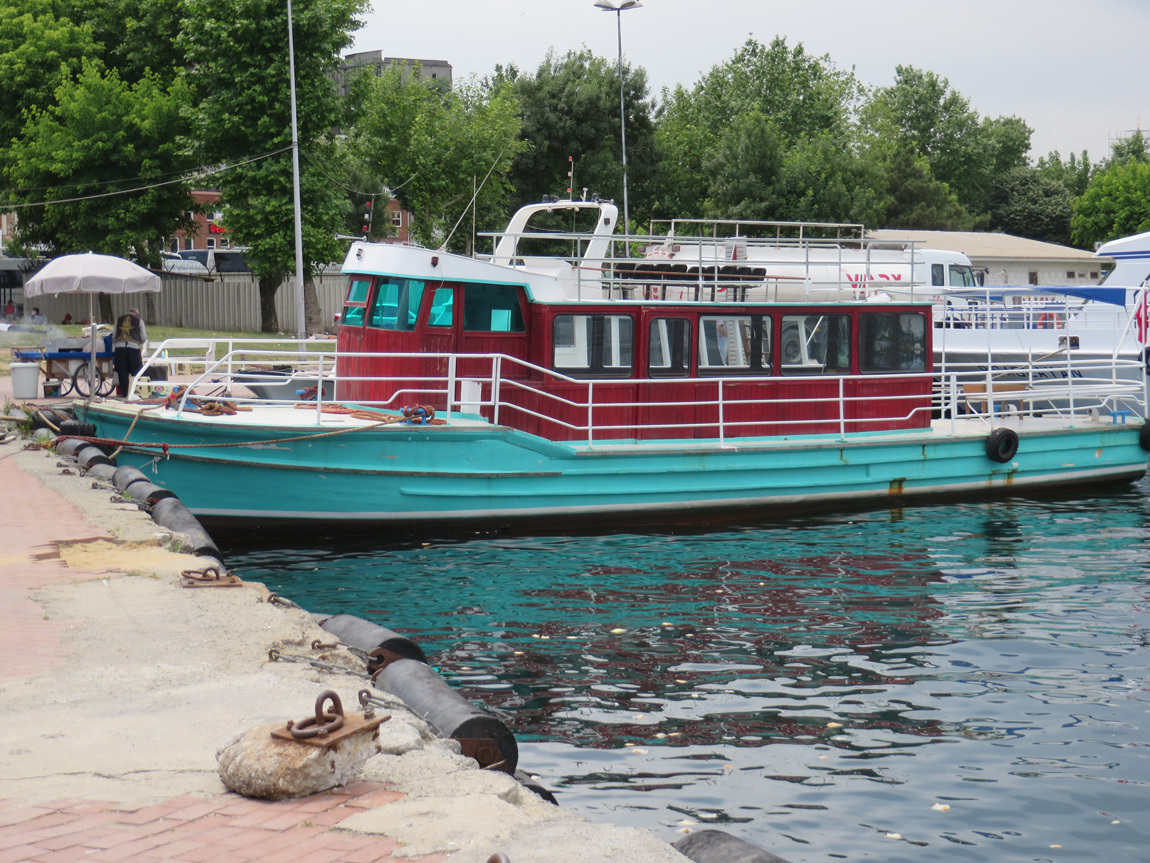
But no! We get onto this huge boat, that could probably seat over 100 people:
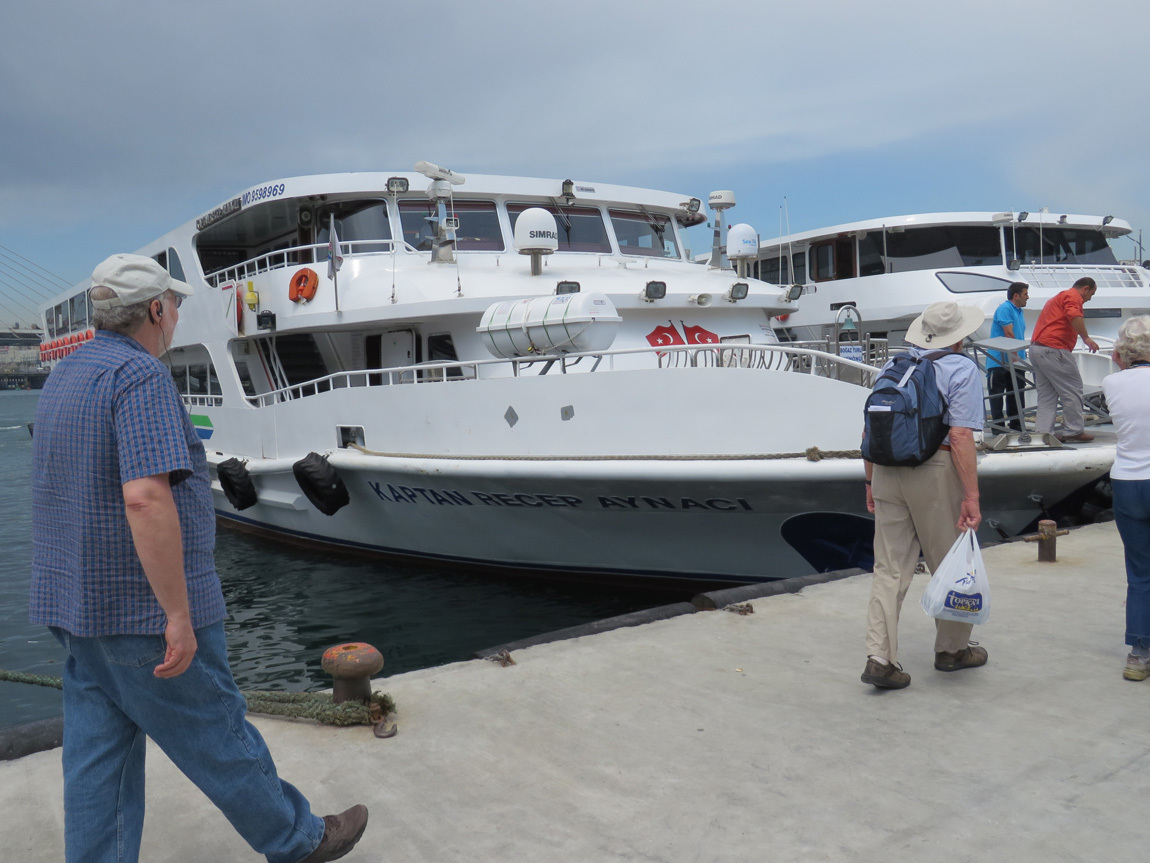
The boat has two levels for passengers. We huddle together in a corner of the lower level. Our whisperers are on so we can hear Ali if we wander around the boat.
I like this zoom-on on the Galata Tower. Look at the people!
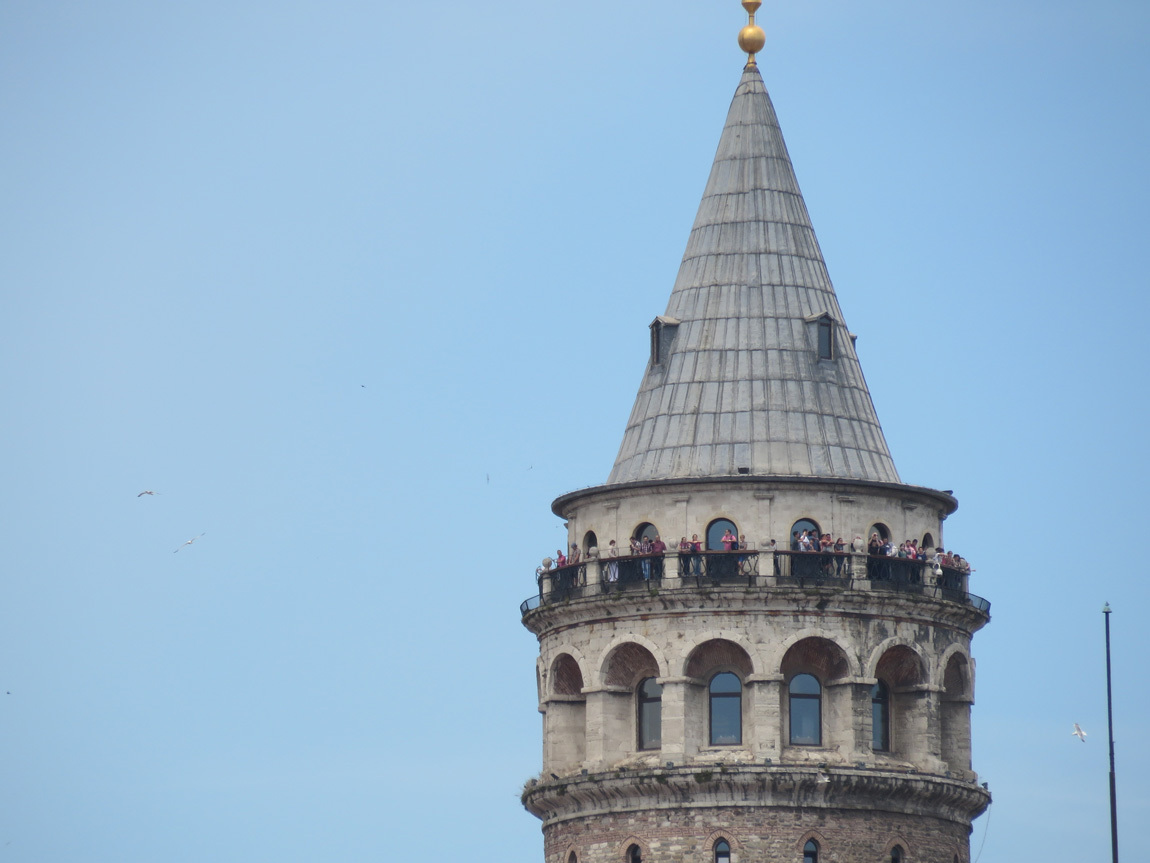
This photo is looking back on the Galata Bridge, which we have just gone under. We are still on the Golden Horn, heading towards the Bosphorus.
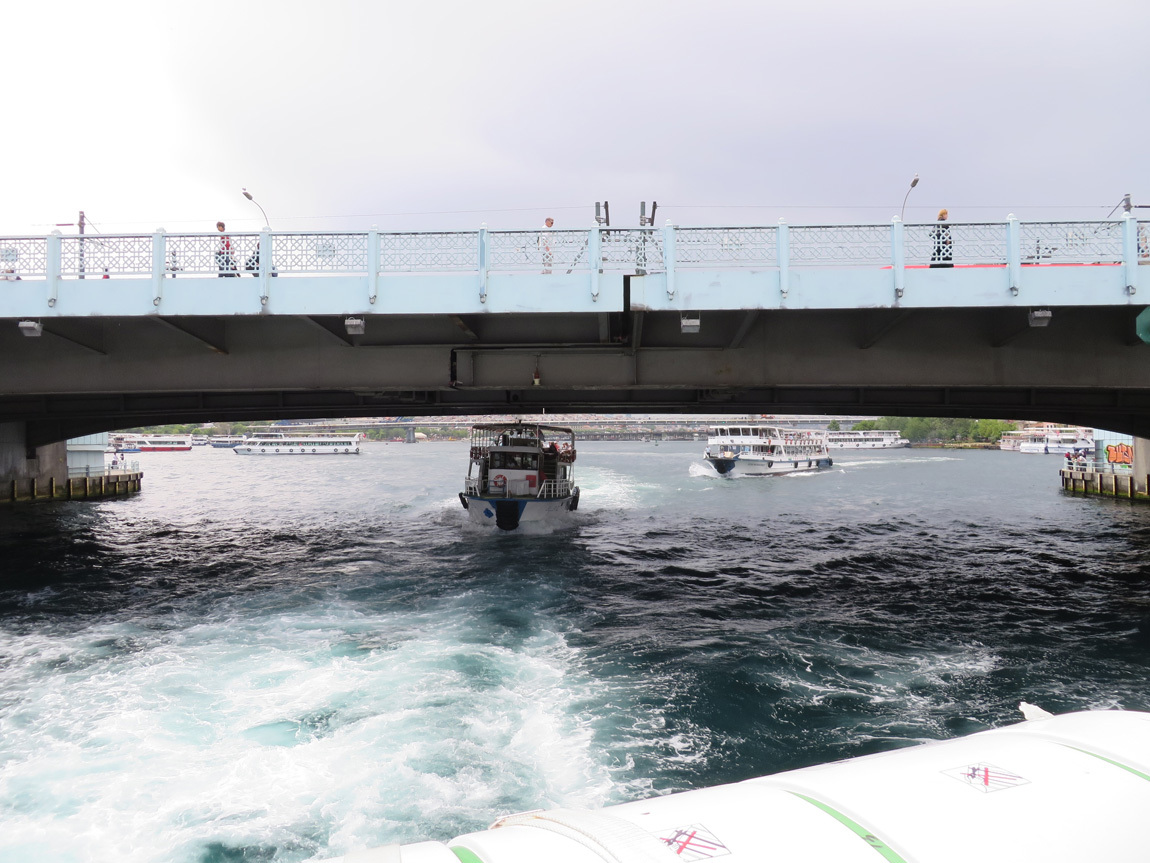
The New Mosque, Yeni Cami:
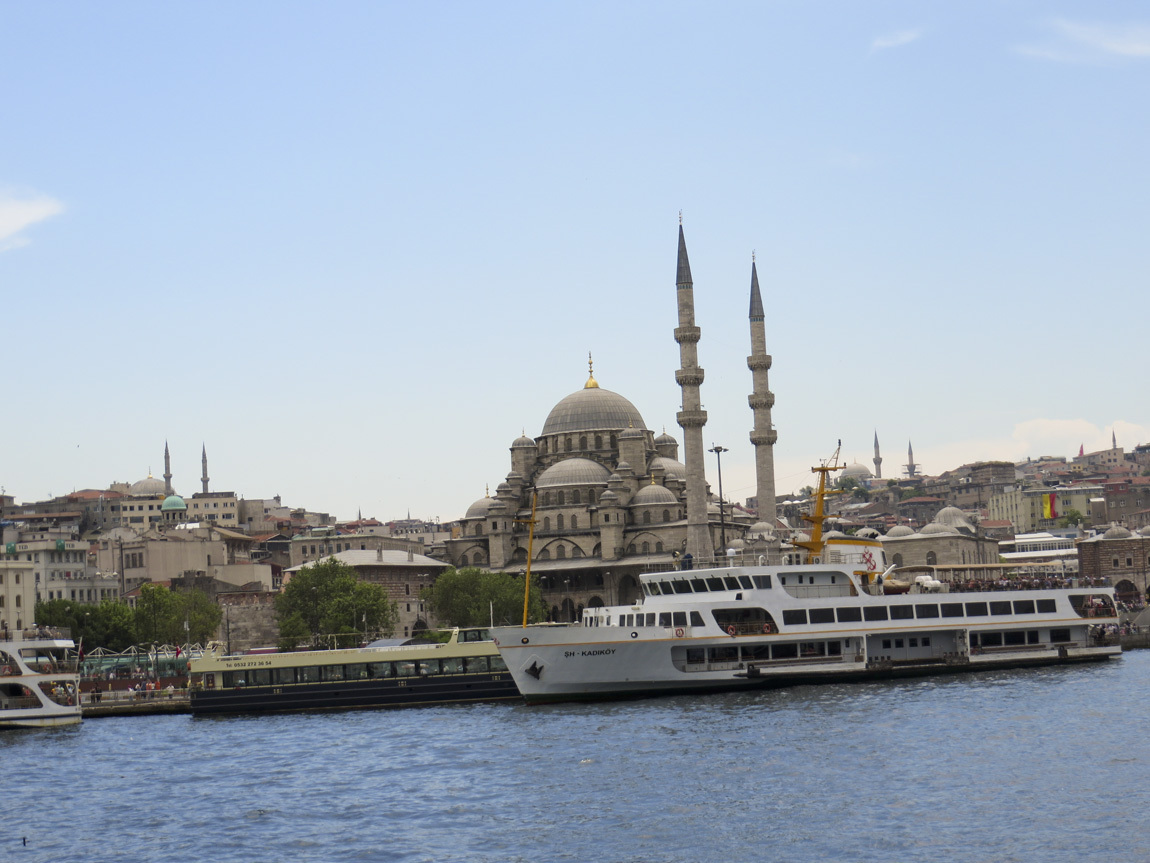
Peninsula at the end of Golden Horn (Old Istanbul side):
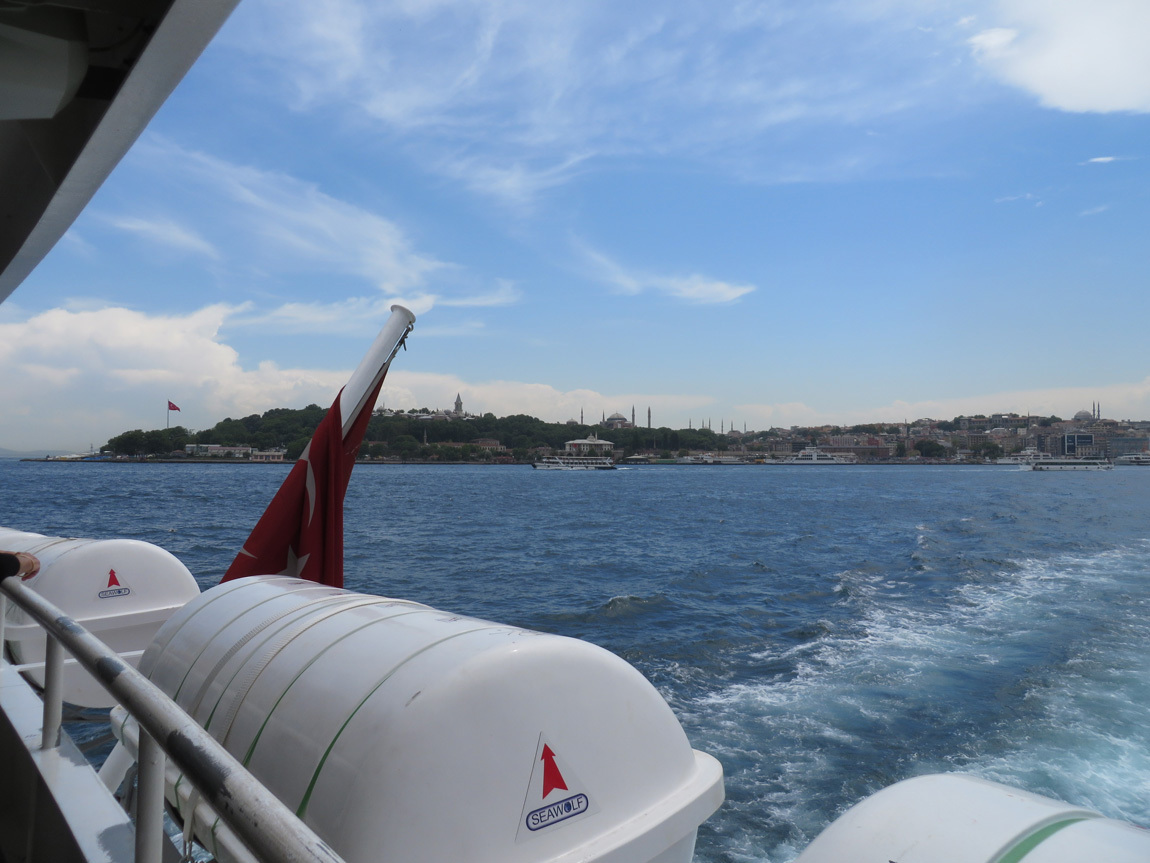
Now our boat has turned up the Bosphorus. We are actually just opposite Taksim Square, where we are staying. This is what it looks like from the boat:
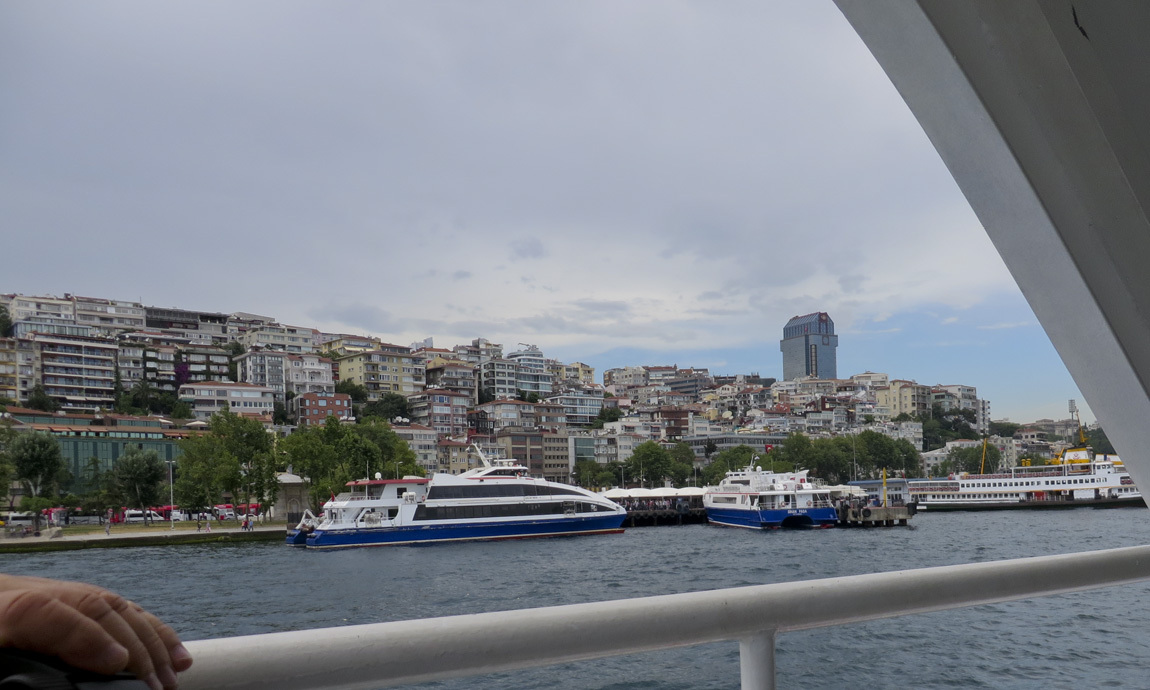
To me, it's such a jumble of buildings. Just a little further along, still on the shore along Taksim Square, is the Dolmabahce Mosque.
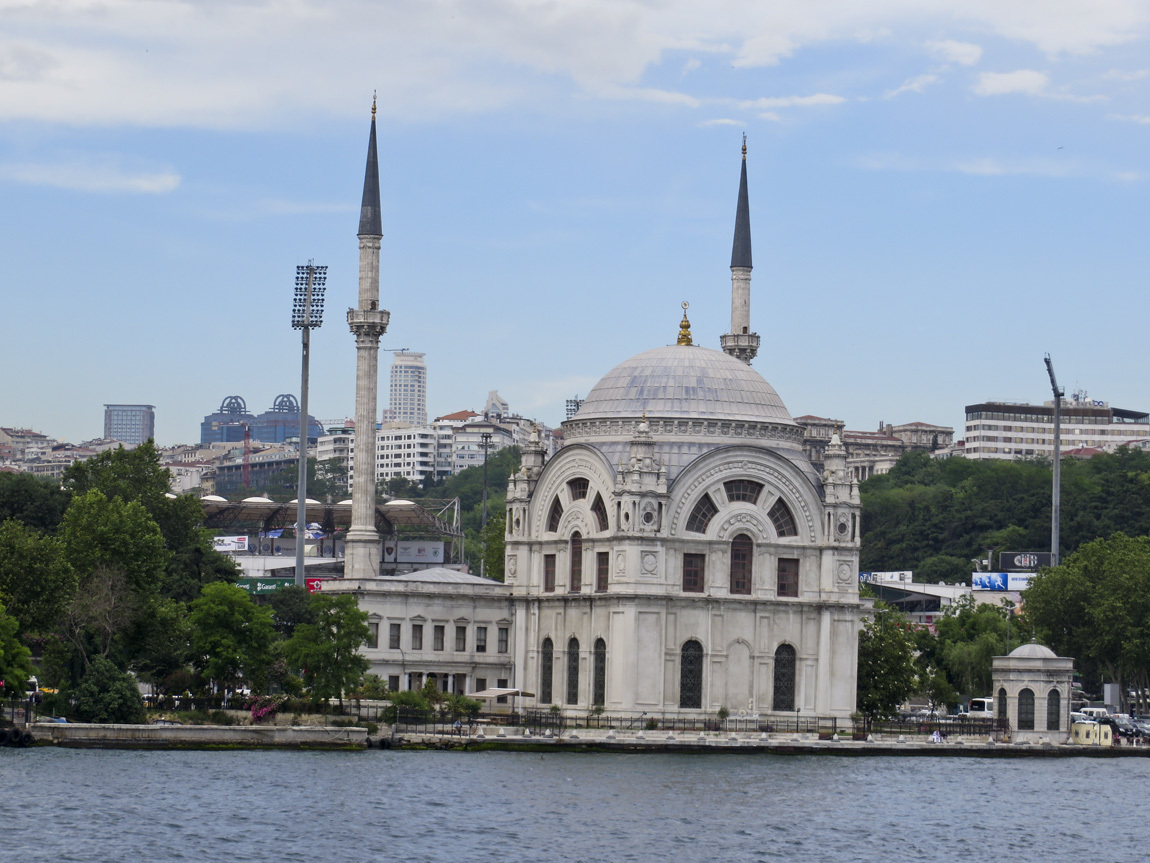
The Dolmabahce Palace:
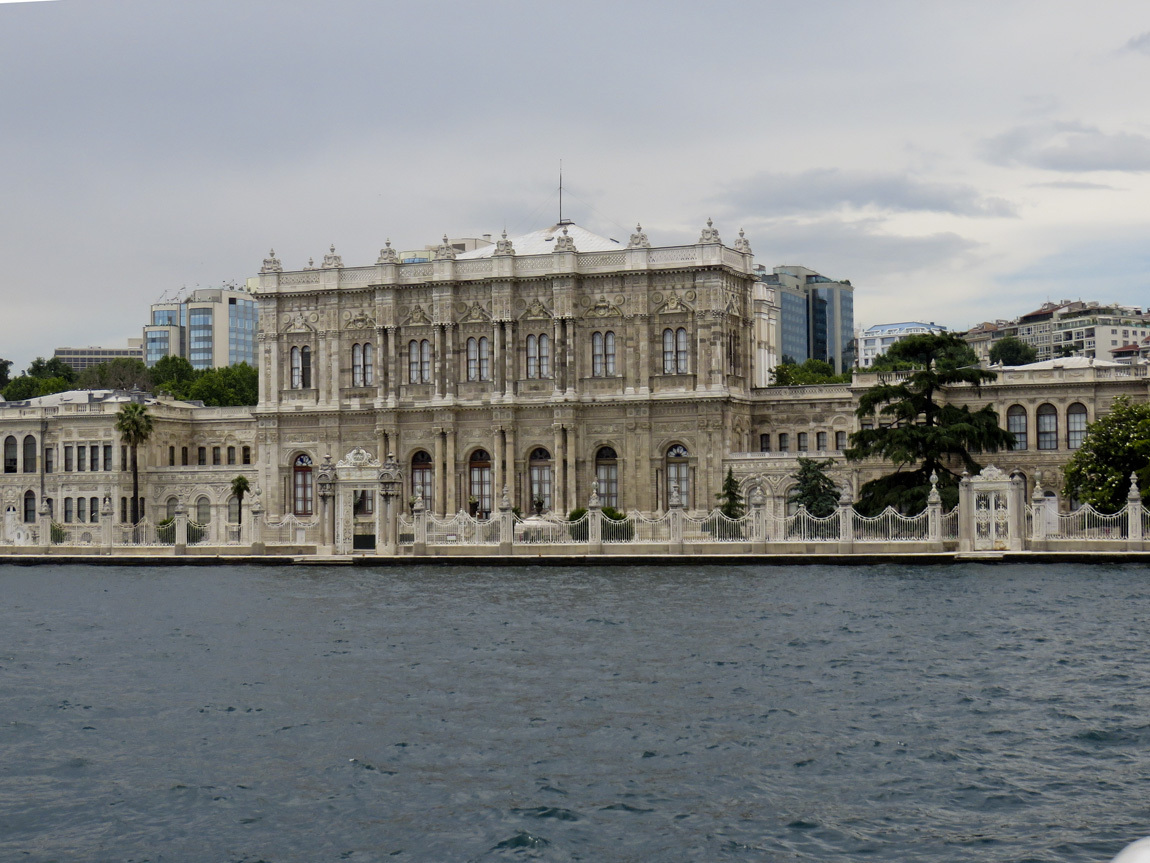
Zoomed out to show the vista:
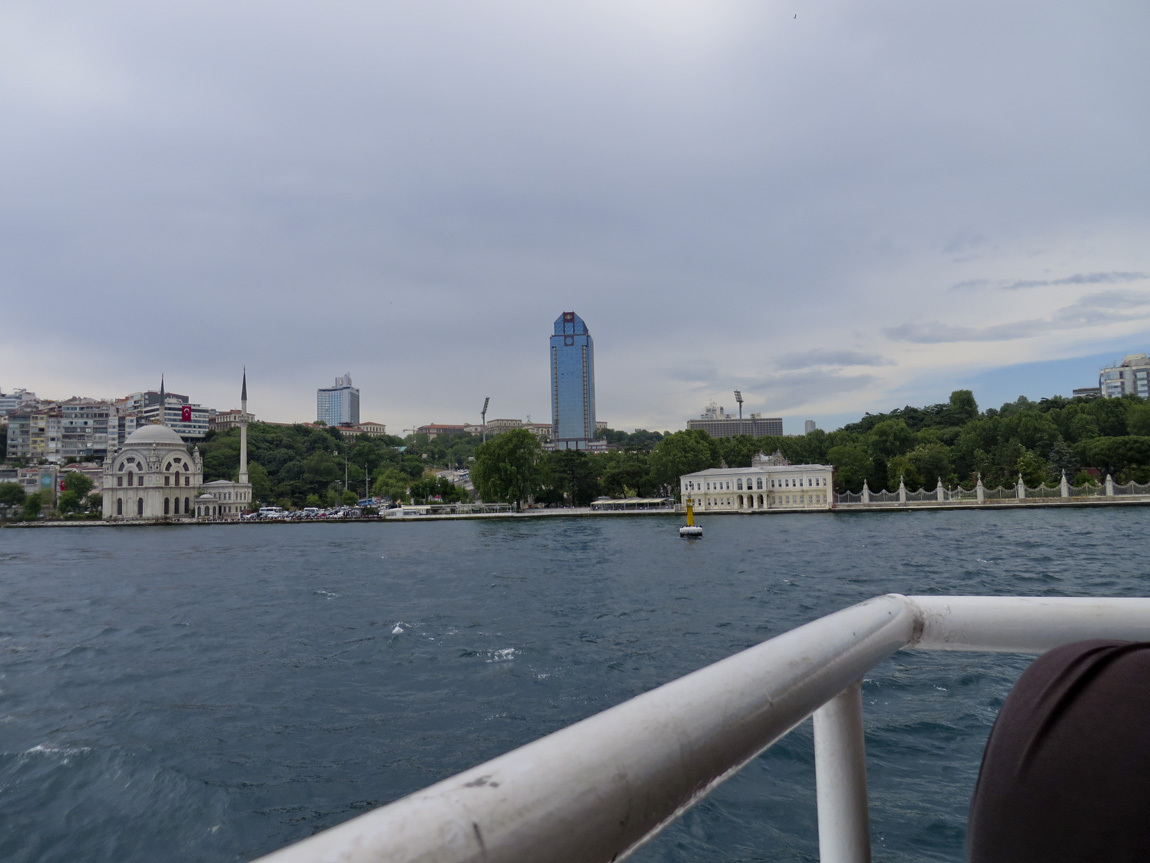
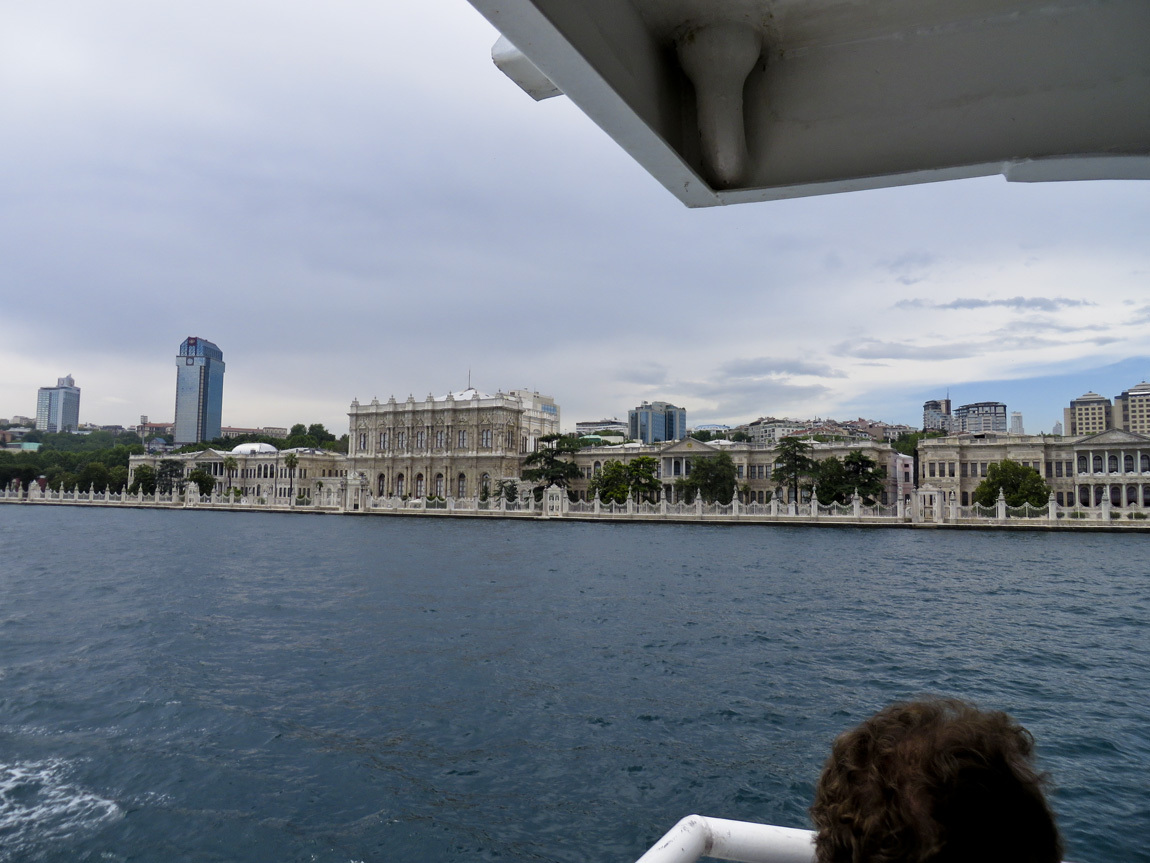
Looking back from the boat, to the Bosphorus/Golden Horn/Sea of Marmara.
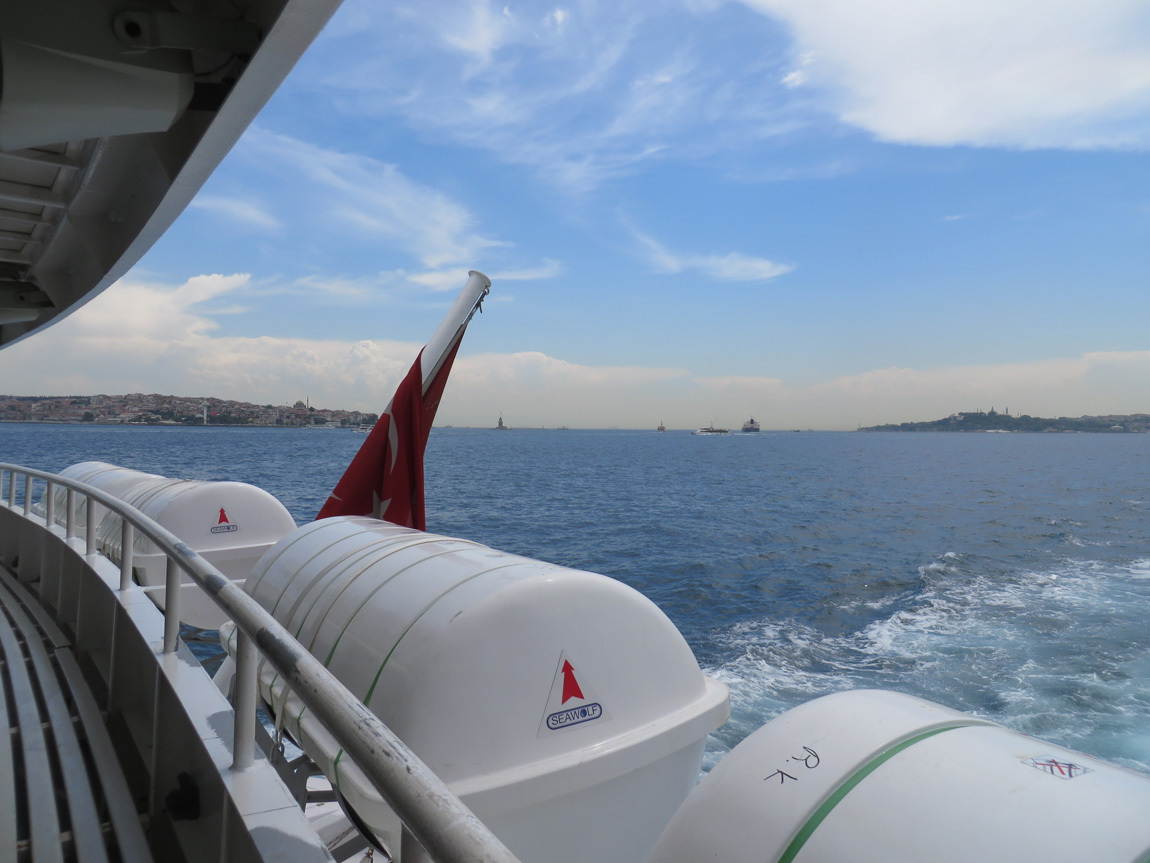
The Ciragan Palace, a former Ottoman palace, is now a five-star hotel of the Kempinski Hotels chain.
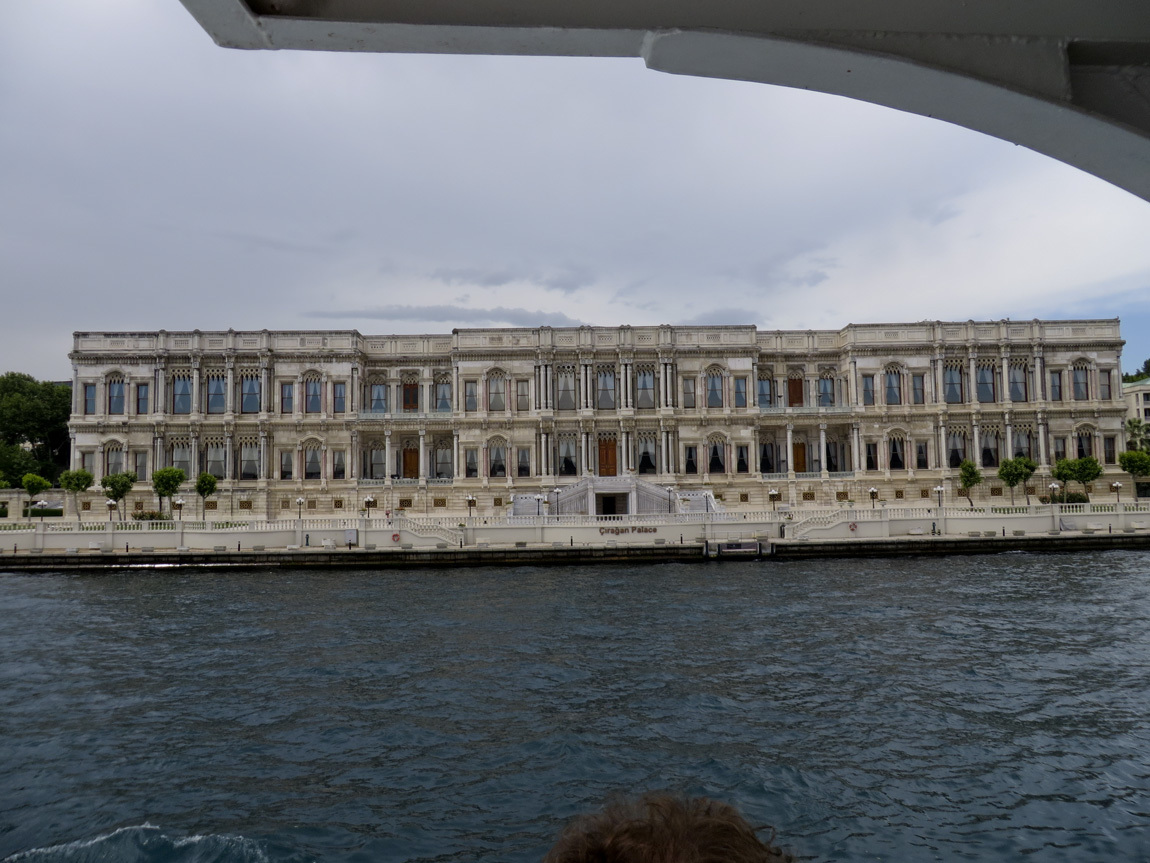
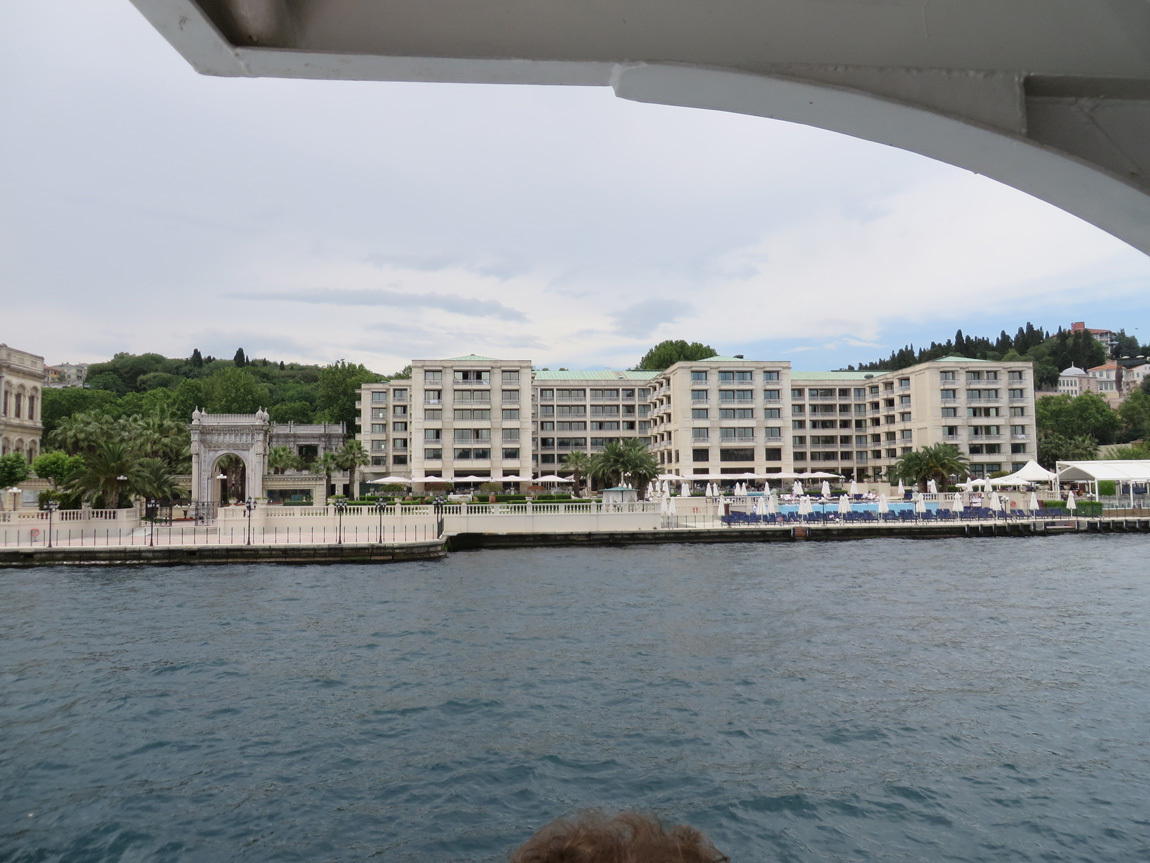
We have now passed under the first suspension bridge that takes Istanbul Cevre Yolu street over the Bosphorus.
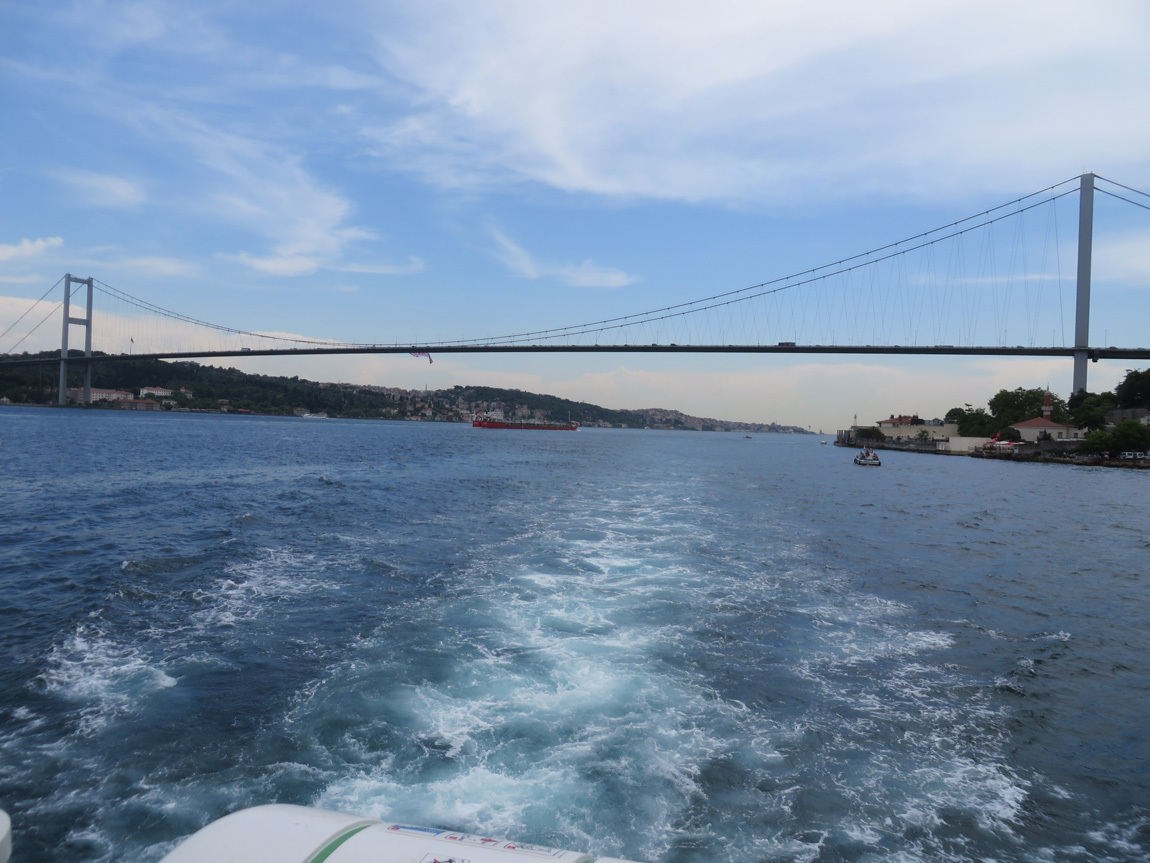
The Bosphorus is an active trade route. Big ships such as this one must be piloted through the sometimes tricky channel by a certified local boat captain. Ali tells us that at one time in the ancient past, barricades were placed across the Bosphorus to control trade routes.
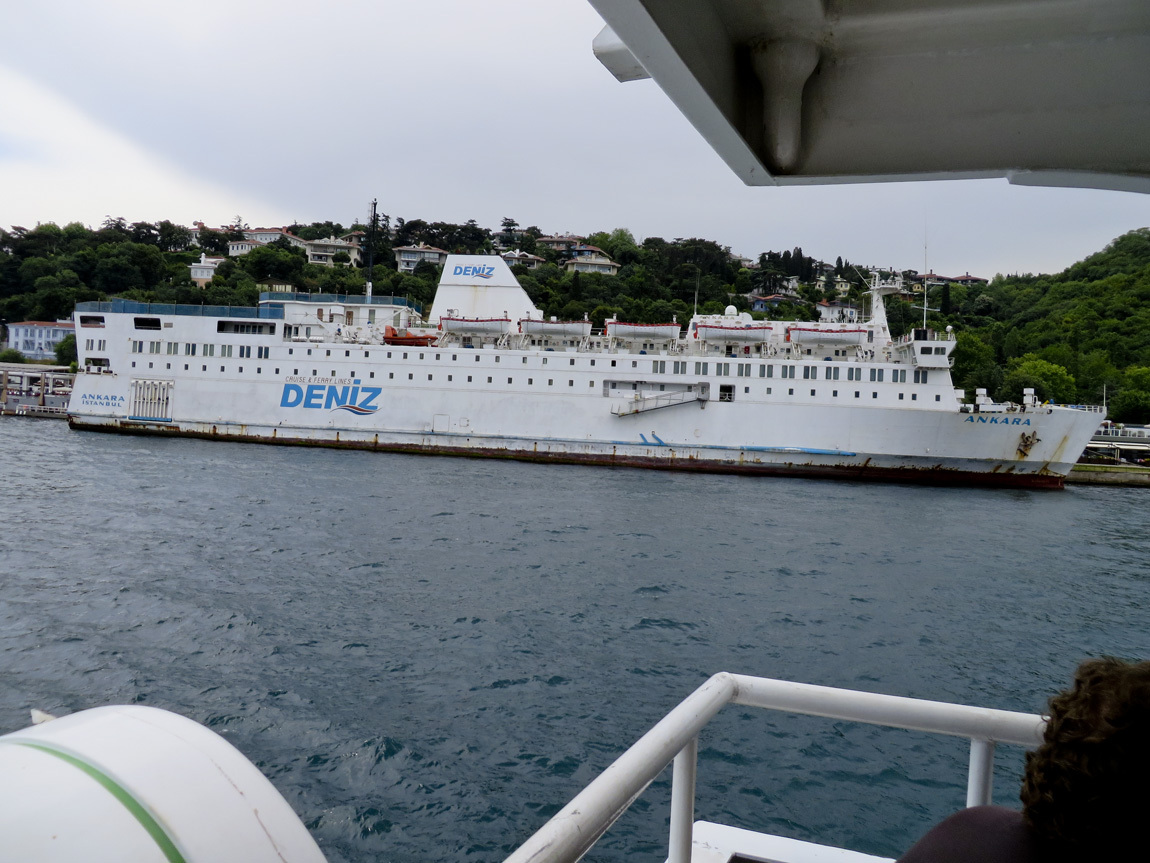
These homes along the shore cost 60-80 million USD.
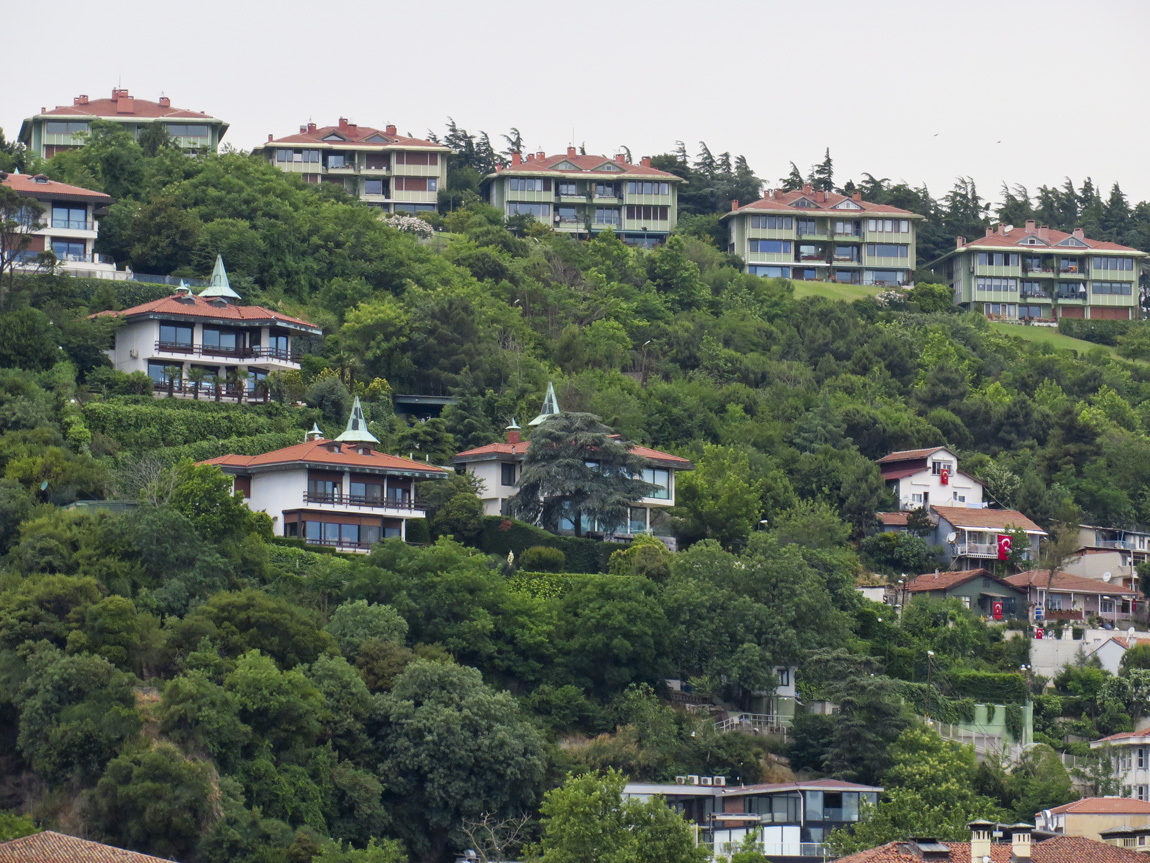
Look at this fortress. Imagine sailing in an old wooden sailboat and seeing this amazing sight. It's the Rumelian Castle.
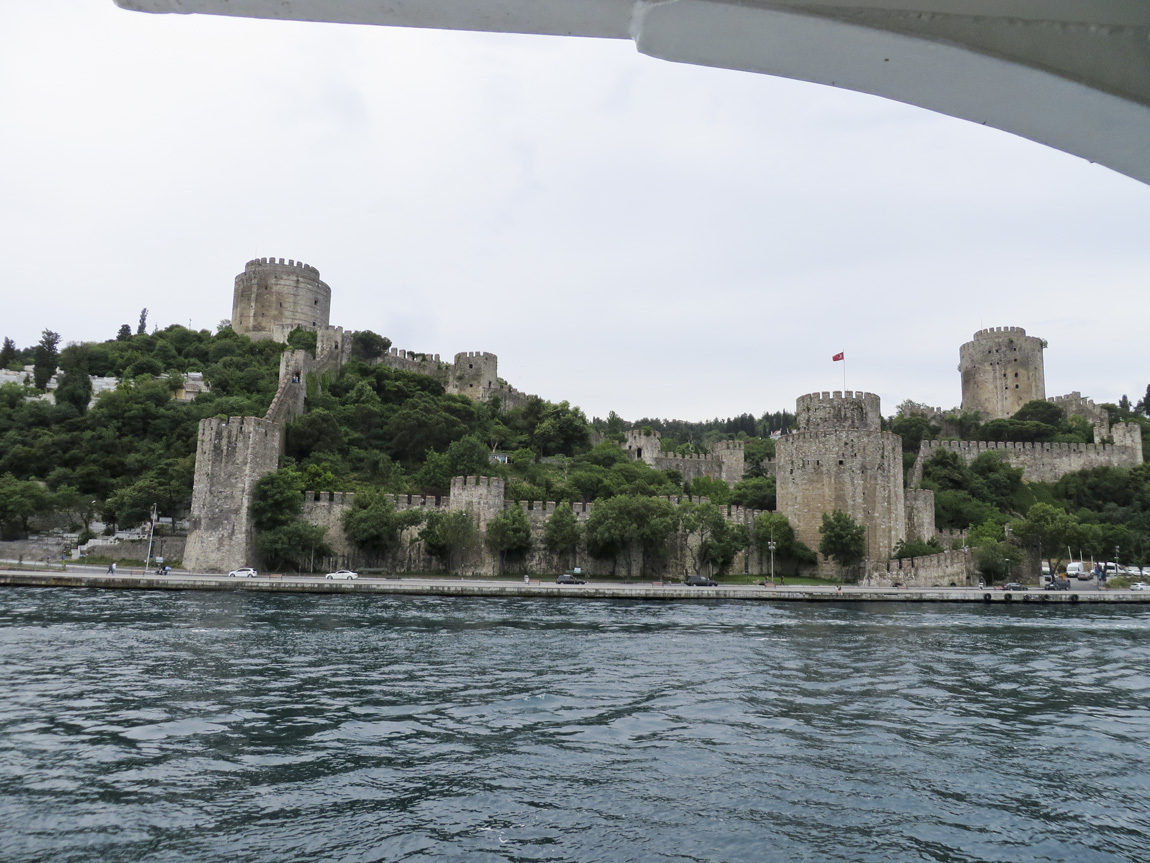
We go under the second suspension bridge over the Bosphorus, and turn around. This point is about a third of the way up the Bosphorus to the Black Sea before we turned around. The next photos are all of the Asian side of the Bosphorus.
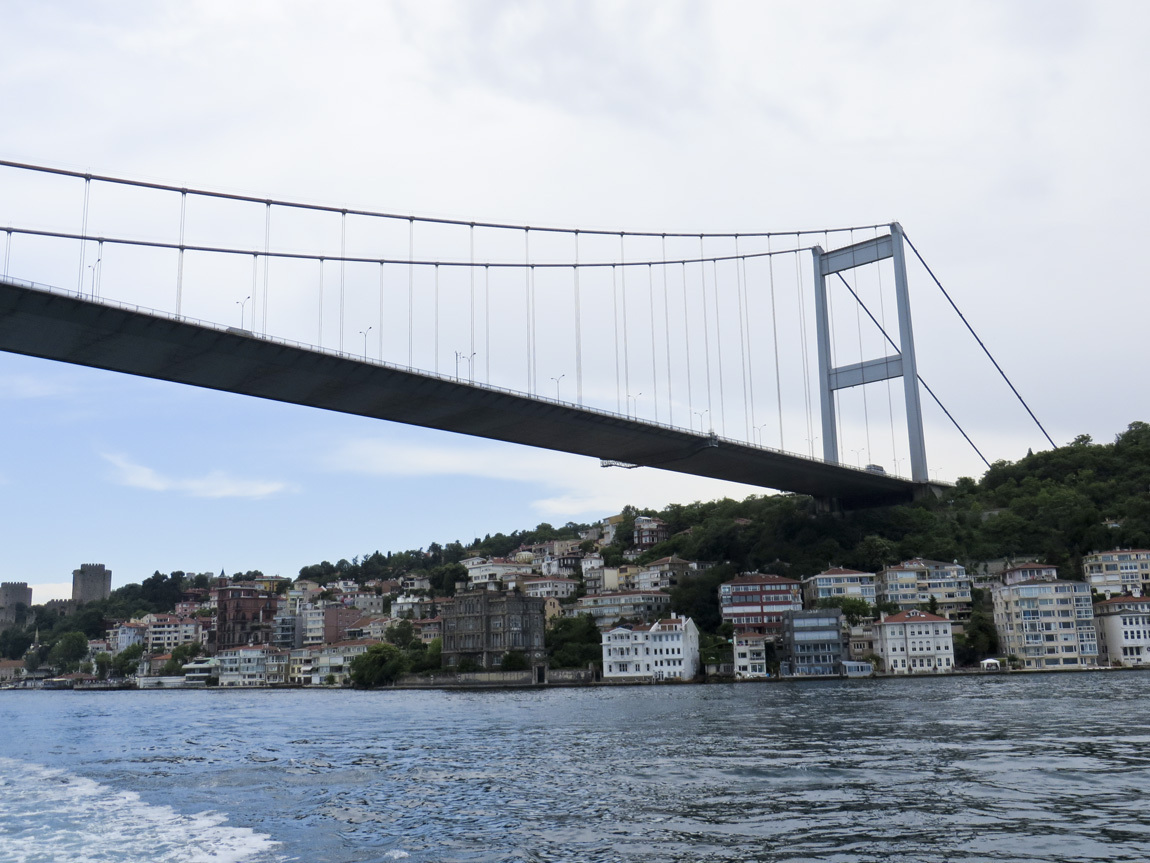
This shows the mix of old and new along the Asian-Istanbul side.
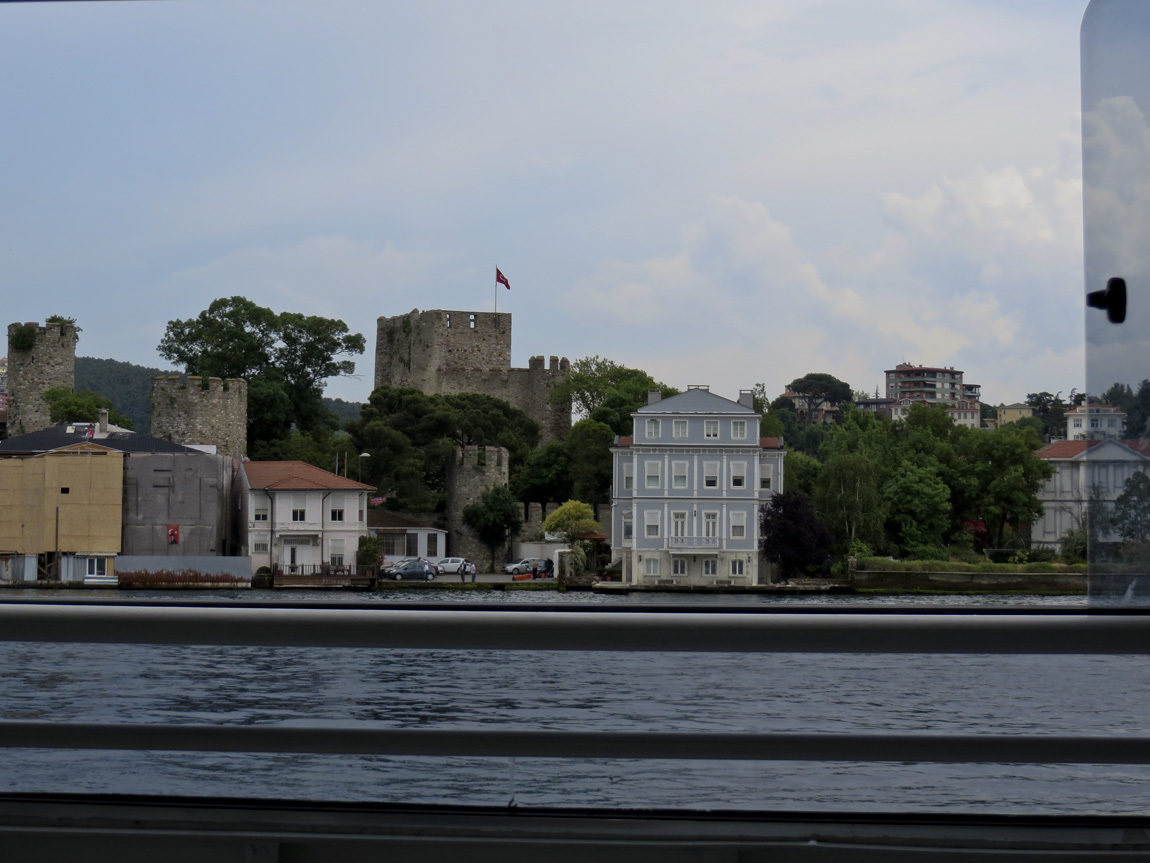
The Kucuksu Pavilion, once a summer palace.
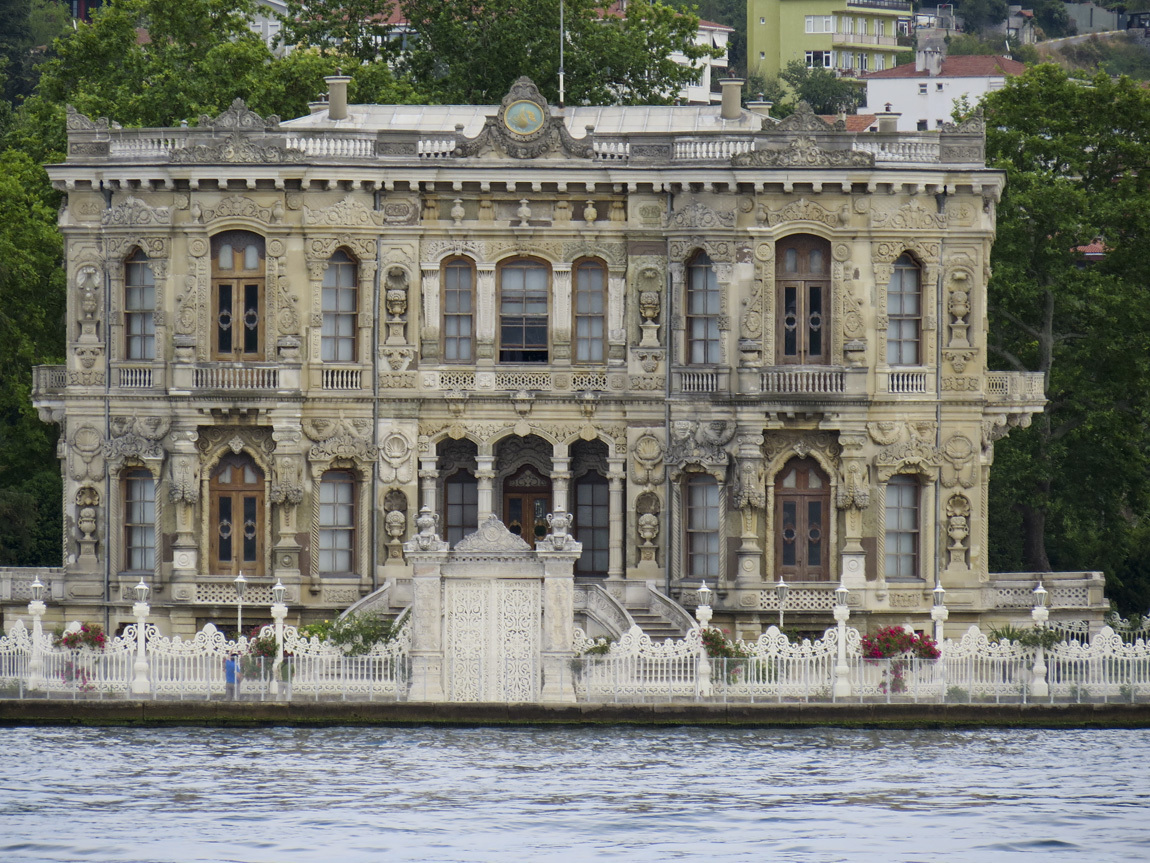
The Beylerbeyi Palace, built as a summer residence in the 1800s by an Ottoman sultan.
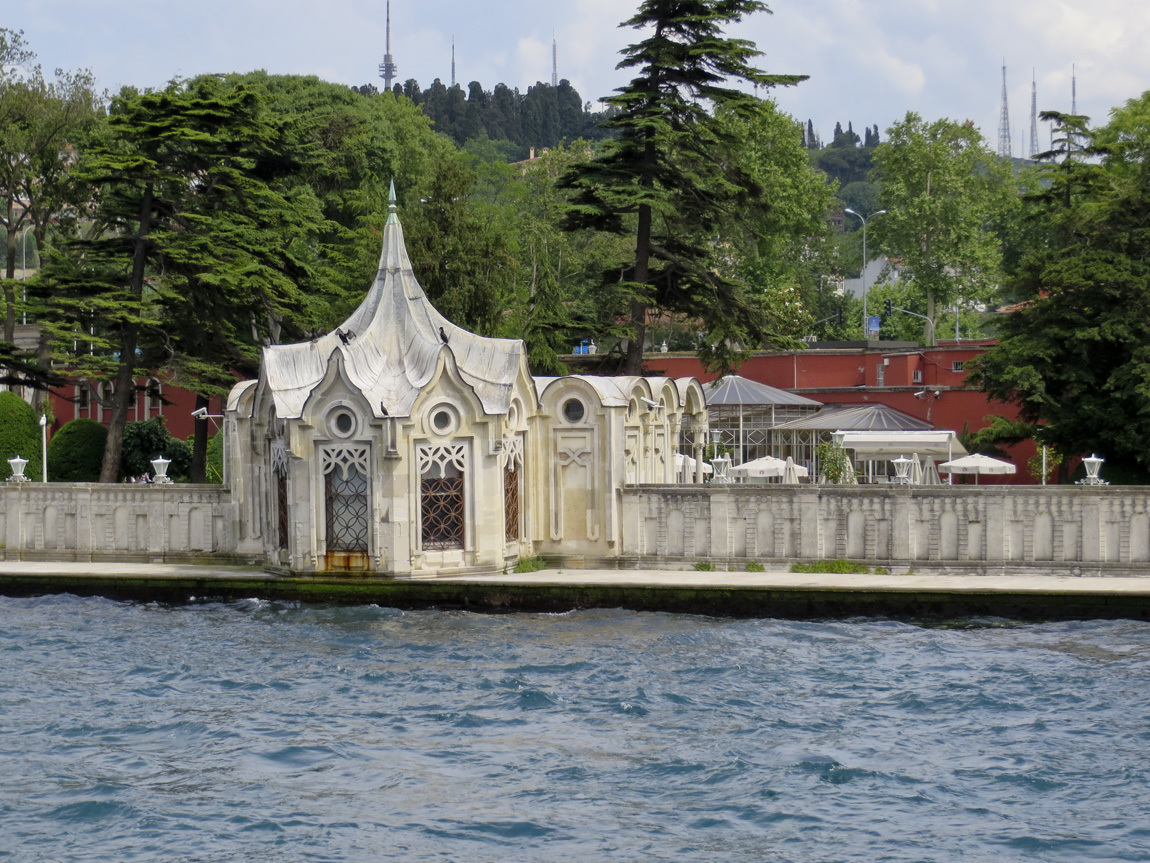
The long view:
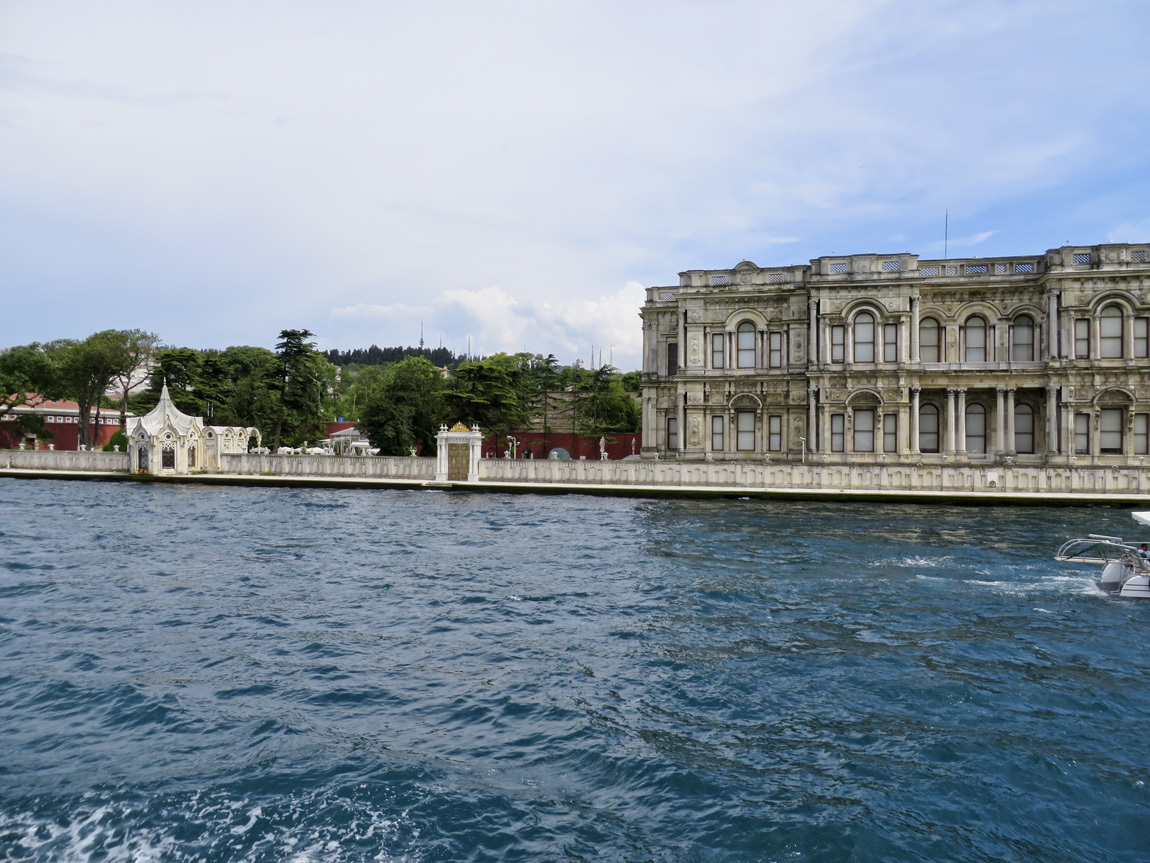
We are now heading back to where we started, where the Golden Horn, Bosphorus, and Sea of Marmara converge.
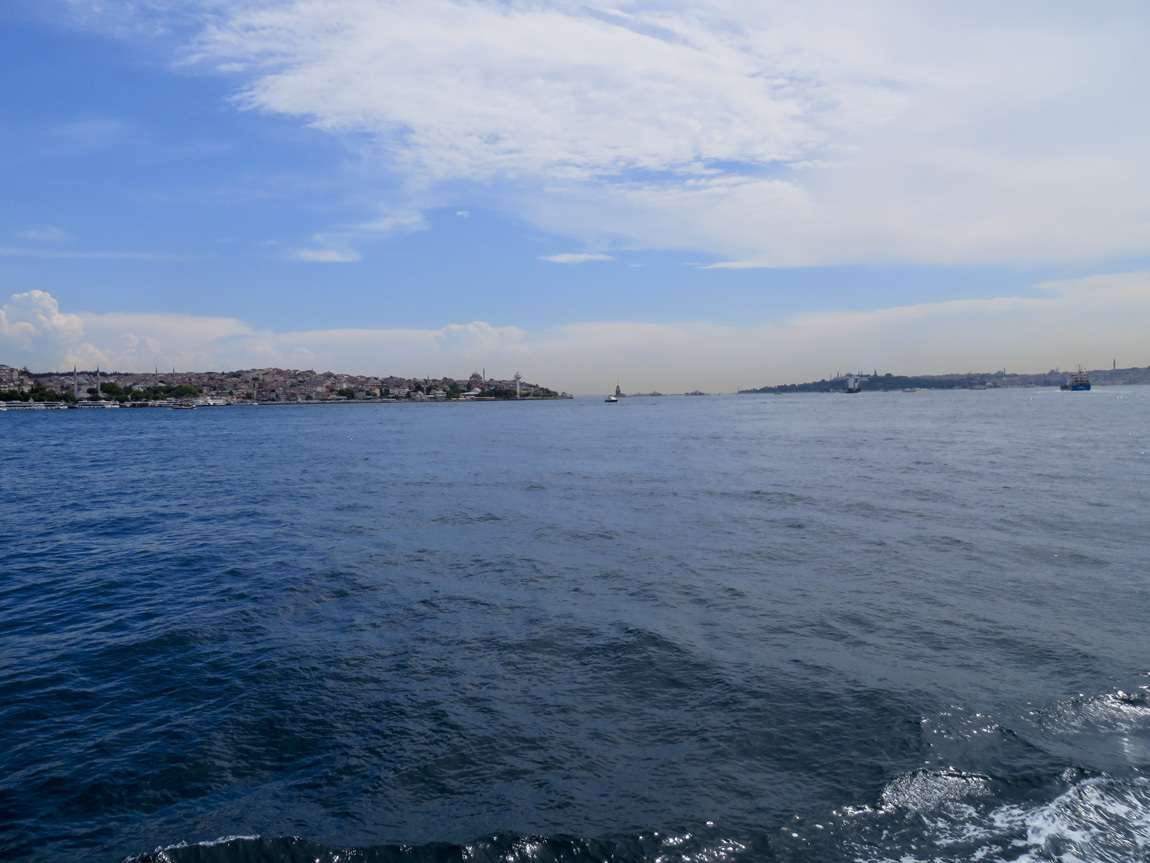
My impressions of Istanbul as seen from the boat.
Most of the modern buildings in Istanbul are concrete and blocky. They all look the same and most are not aesthetically pleasing. There are so many, many of them. The interesting buildings are the old palaces, mosques, and fortresses, whether in partial ruin or restored. Here and there amidst the old and new buildings appear modern highrises. Eventually more highrises will be built and the skyline of Istanbul will change, for better or worse.
We haven't been in Istanbul for 24 hours yet, that's hard to believe! We have done and seen so much. Our next destination, luckily, is our hotel.
Navigation:
first Turkey post
next Turkey post
The cruise starts at 2 pm and lasts about an hour and a half. I shot about 100 photos. I won't show you that many, don't worry! I find the GPS tags on the photos fun - I can pull up our exact location for each shot, thus mapping our journey.
We start right between the Galata and Ataturk bridges, on the Old Istanbul side of the Golden Horn. This photo is of part of the Ahi Ahmet Celebi Cami. I like the crumbling structure you see in front.

We follow Ali, wondering which boat is ours. This one looks about the right size for 22 people:

But no! We get onto this huge boat, that could probably seat over 100 people:

The boat has two levels for passengers. We huddle together in a corner of the lower level. Our whisperers are on so we can hear Ali if we wander around the boat.
I like this zoom-on on the Galata Tower. Look at the people!

This photo is looking back on the Galata Bridge, which we have just gone under. We are still on the Golden Horn, heading towards the Bosphorus.

The New Mosque, Yeni Cami:

Peninsula at the end of Golden Horn (Old Istanbul side):

Now our boat has turned up the Bosphorus. We are actually just opposite Taksim Square, where we are staying. This is what it looks like from the boat:

To me, it's such a jumble of buildings. Just a little further along, still on the shore along Taksim Square, is the Dolmabahce Mosque.

The Dolmabahce Palace:

Zoomed out to show the vista:


Looking back from the boat, to the Bosphorus/Golden Horn/Sea of Marmara.

The Ciragan Palace, a former Ottoman palace, is now a five-star hotel of the Kempinski Hotels chain.


We have now passed under the first suspension bridge that takes Istanbul Cevre Yolu street over the Bosphorus.

The Bosphorus is an active trade route. Big ships such as this one must be piloted through the sometimes tricky channel by a certified local boat captain. Ali tells us that at one time in the ancient past, barricades were placed across the Bosphorus to control trade routes.

These homes along the shore cost 60-80 million USD.

Look at this fortress. Imagine sailing in an old wooden sailboat and seeing this amazing sight. It's the Rumelian Castle.

We go under the second suspension bridge over the Bosphorus, and turn around. This point is about a third of the way up the Bosphorus to the Black Sea before we turned around. The next photos are all of the Asian side of the Bosphorus.

This shows the mix of old and new along the Asian-Istanbul side.

The Kucuksu Pavilion, once a summer palace.

The Beylerbeyi Palace, built as a summer residence in the 1800s by an Ottoman sultan.

The long view:

We are now heading back to where we started, where the Golden Horn, Bosphorus, and Sea of Marmara converge.

My impressions of Istanbul as seen from the boat.
Most of the modern buildings in Istanbul are concrete and blocky. They all look the same and most are not aesthetically pleasing. There are so many, many of them. The interesting buildings are the old palaces, mosques, and fortresses, whether in partial ruin or restored. Here and there amidst the old and new buildings appear modern highrises. Eventually more highrises will be built and the skyline of Istanbul will change, for better or worse.
We haven't been in Istanbul for 24 hours yet, that's hard to believe! We have done and seen so much. Our next destination, luckily, is our hotel.
Navigation:
first Turkey post
next Turkey post
Comments
No comments yet
Add Comment